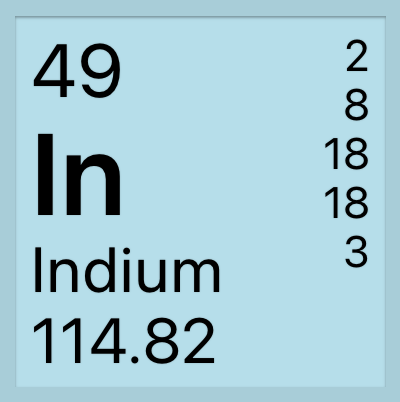An Illuminating Metal

Discovered in 1863, indium is a soft, silvery-white metal named for its indigo blue line in the atomic spectrum. Relatively scarce on the Earth’s crust, indium is found with zinc sulfide ores, as well as iron, lead and copper ores. About 90% of indium is isolated as a byproduct of zinc mining. China controls 43%–66% of the world’s indium reserves.
If you have a touchscreen phone or tablet, the very device you own contains indium, in the form of indium tin oxide. It is an electrical conductive film used to make LCD displays and photovoltaic panels, accounts for 45% of all indium usage. This compound is a vital component of the touchscreen, used in a transparent film that conducts electricity. In fact 45% of all indium extracted has a use involving indium tin oxide. Other uses of indium include specialty alloys, microchips and semiconductors.
Challenges
The problem with indium is that its supply is dependent upon the zinc mining industry of which indium is a small byproduct. Zinc itself is a critcal and endangered element. Because of its dependence on zinc mining, it is difficult to rapidly increase the supply of indium. Secondly, the amount of indium present in a particular device is actually rather small, often only as much as a few hundred milligrams or less. This means that work is needed in order to work out an efficient way of recovering the indium from unwanted devices. Lastly, growth in the use of LCDs and touch screens, as well as the expanding solar cell industry, are driving global demand for indium. It is worth noting that a number of the other elements are also at risk of their demand outstripping supply due to their usage in electronic devices, or in their manufacture. These include gallium (Ga), silver (Ag), germanium (Ge) and arsenic (As).
Solutions
Chemists are finding alternatives to indium in LCDs from more abundant materials, such as antimony, carbon nanotubes and conductive polymers. As consumers, we can extend the life of our LCD screens (phone, computers and TVs) by upgrading less often and donating devices.
